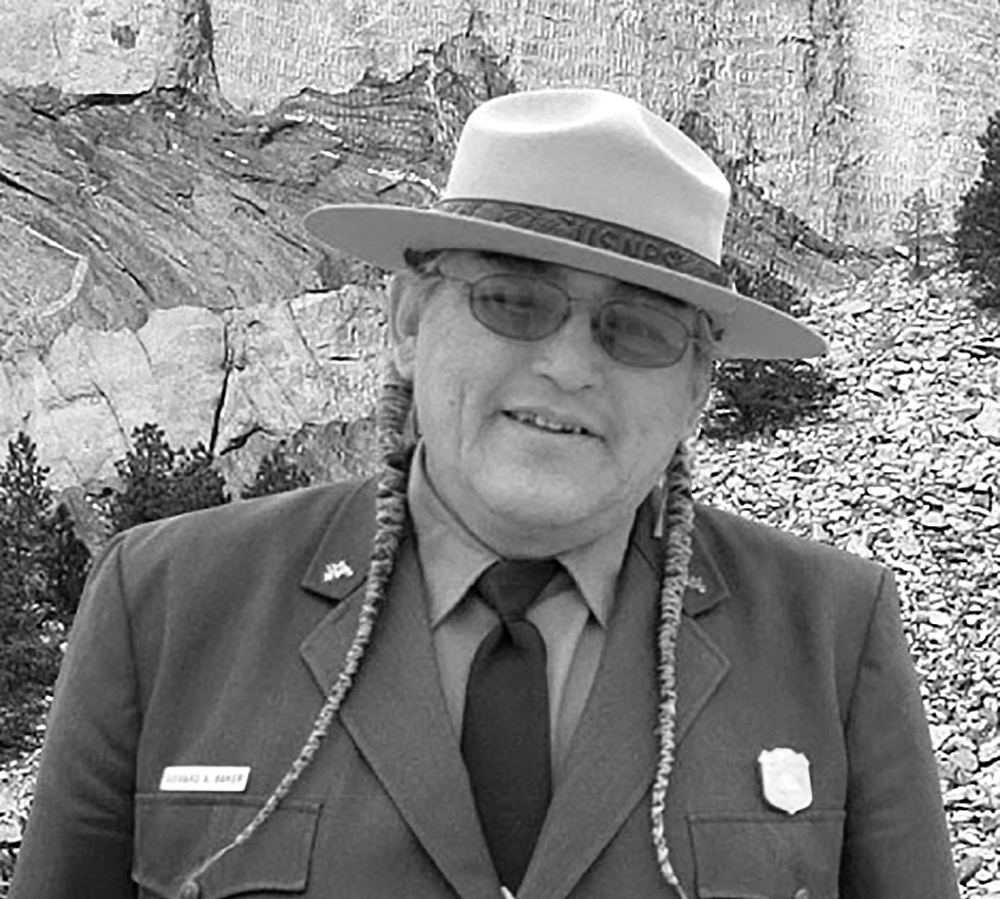Integrating Native American history and heritage in the NPS

Dr. Gerard Baker outfitted in his National Park Service uniform.
According to a press release from NDSU University Press, Dr. Gerard Baker will be giving a presentation titled, Yellow Wolf: A National Park Service Superintendent’s Story.
Dr. Gerard Baker will share his story on his seemingly monumental task on how to integrate Native American voices into national parks, monuments and historic sites. The event will highlight how the National Park Service has changed its programs and exhibits, in order to integrate Native American histories and cultures.
Dr. Gerard Baker grew up in North Dakota on the Fort Berthold Reservation. He has spent thirty-three years in the National Park Service, getting his start in 1979 at the Knife River Indian Villages National Historic Site. He continued his work at Fort Union Trading Post National Historic Site, Theodore Roosevelt National Park, Little Big Horn Battlefield National Monument, Chickasaw National Recreation Area, Lewis and Clark Historic Trail and the Mt. Rushmore National Memorial. He has had multiple roles throughout his career including historian, ranger and superintendent. Before his retirement in 2010, he served as an assistant director for the National Park Service, overseeing American and Indian Relations.
The NDSU Faculty Senate Native American Ad Hoc Committee, the Office of Multicultural Programs, the Department of History, Philosophy, and Religious Studies, And the College of Arts, Humanities, and Social Sciences are the departments that worked together to make this presentation possible.
The event will be held on Thursday, Feb. 27 at 7 p.m. at Minard Hall, Room 230. It is free and open to the public.
The NDSU Press (the one announcing this event and sending out the press release) strives to stimulate and put together interdisciplinary scholarship through the Red River Valley, North Dakota and the plains of North America. The NDSU Press recently announced that Apple in the Middle, a book published by the Press in 2018 and written by Dawn Quigley, earned national honors from the American Indian Library Association. This was the first book published by the Press for their Contemporary Voices of Indigenous Peoples book series.
In an interview with Dr. Kelley, I asked her why this book was important and she stated, “This book is important because it works to integrate Indigenous life into everyday life through an Indigenous perspective. When talking about Indigenous peoples we often refer to their past, this book gives a contemporary (modern) voice to Native Americans and is also written by someone who identifies with and is proud of her culture.” Like Dr. Gerard Baker, NDSU and the NDSU Press are actively working to integrate Native American voices.
